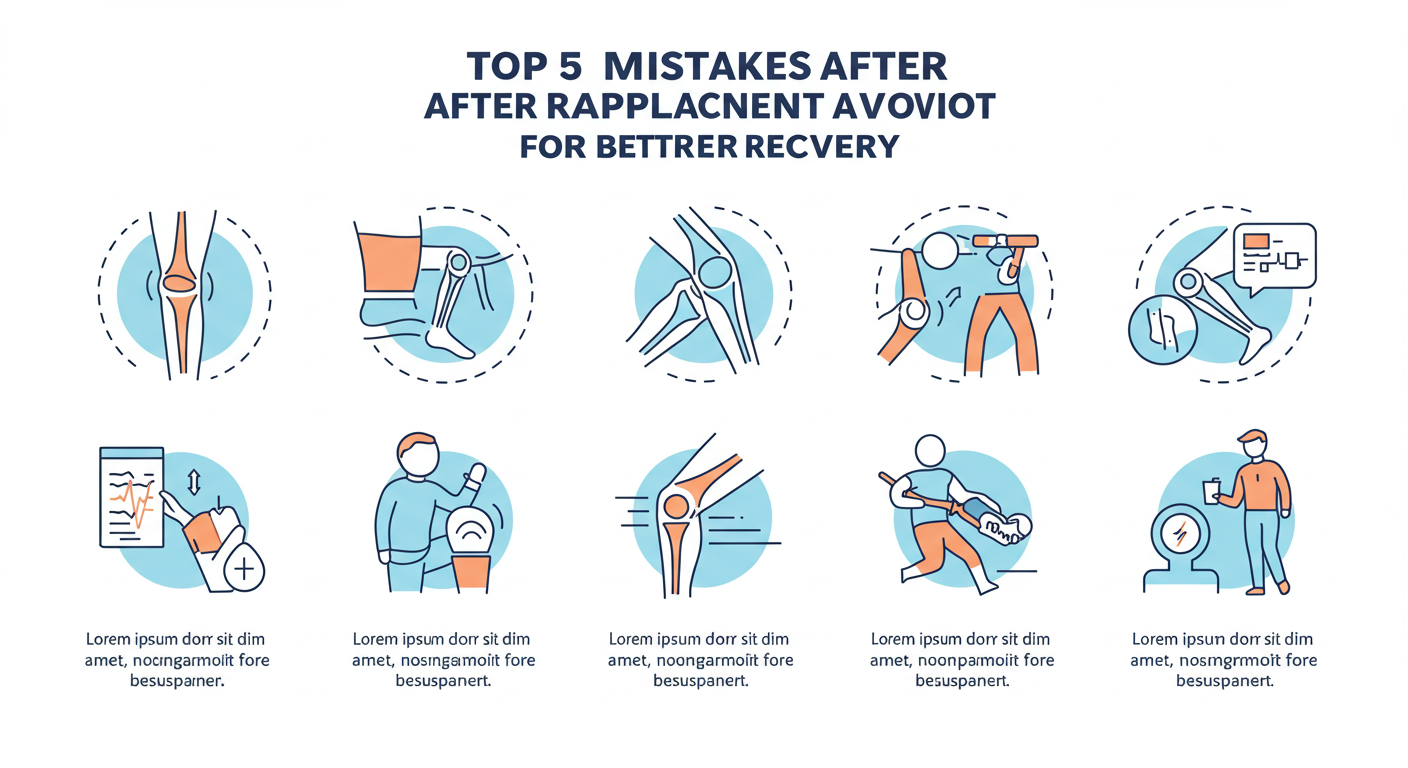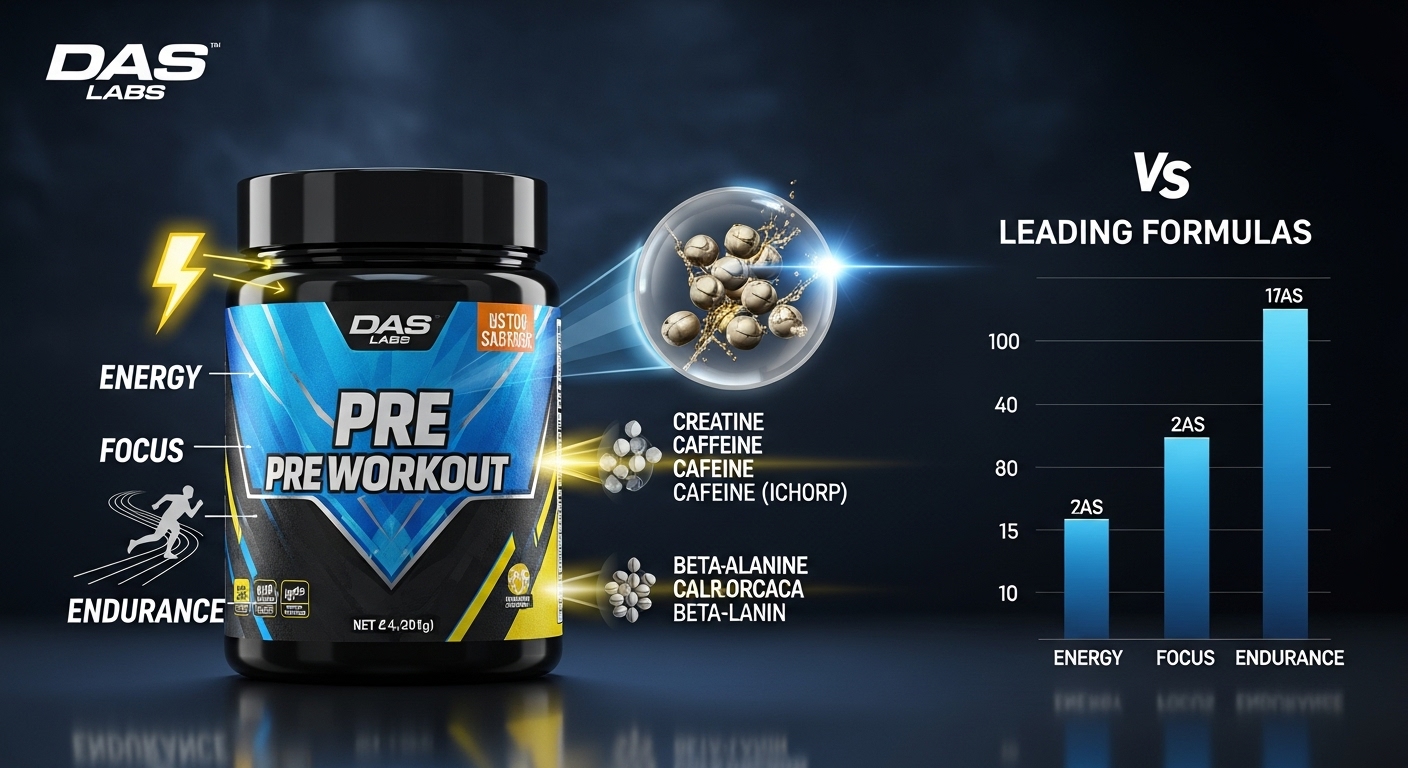Health
Top 5 Mistakes After Knee Replacement: What You Must Avoid for Better Recovery

Recovering from knee replacement surgery is a long journey that demands patience, discipline, and the right knowledge. Many patients expect a quick return to normal life, but the process takes time and effort. One of the most important things to understand is that making mistakes during recovery can significantly delay healing or even cause complications. In this article, we will explore the top 5 mistakes after knee replacement, why they matter, and how to avoid them. By steering clear of these errors, you can ensure smoother rehabilitation and regain mobility with fewer setbacks.
Ignoring Physical Therapy Sessions
After undergoing a knee replacement, many patients believe rest is the best cure. While rest is important, completely avoiding physical therapy is one of the top 5 mistakes after knee replacement. Physical therapy is designed to help rebuild strength, restore flexibility, and encourage proper movement patterns.
Skipping therapy sessions can result in stiffness, reduced range of motion, and long-term pain. Regular sessions under a therapist’s guidance gradually increase your activity level, preventing complications like blood clots or scar tissue buildup.
| Activity | Benefit of Doing | Risk of Skipping |
|---|---|---|
| Stretching Exercises | Improves flexibility | Leads to joint stiffness |
| Walking with Guidance | Boosts circulation | Higher risk of blood clots |
| Strength Training | Builds muscle support | Slower healing process |
Key Insight: Consistency in physiotherapy ensures that your new knee adapts smoothly. Missing appointments not only slows down progress but also reduces overall functionality of the joint.
Overdoing Physical Activity Too Soon
Just as ignoring therapy is a problem, doing too much too soon is another of the top 5 mistakes after knee replacement. Patients sometimes push themselves harder than recommended, thinking it will speed up recovery. Unfortunately, this can place unnecessary strain on the surgical site.
Excessive walking, lifting heavy objects, or bending can cause swelling, pain, or even implant-related complications. Surgeons usually provide a step-by-step recovery plan tailored to your age, weight, and overall health. Following this plan is crucial for safe healing.
| Week After Surgery | Recommended Activity | Avoid Doing |
|---|---|---|
| Week 1–2 | Short assisted walks | Climbing stairs repeatedly |
| Week 3–4 | Gradual strength exercises | Running or jumping |
| Week 5–6 | Increased walking distances | Lifting heavy items |
Key Insight: Balance is vital. Moderate, controlled activity helps healing, but pushing beyond limits may set back recovery.
Not Following Post-Surgery Care Instructions
Neglecting aftercare is another common error among patients. This includes failing to take prescribed medications, ignoring wound care instructions, or not attending follow-up visits. Among the top 5 mistakes after knee replacement, ignoring medical guidance is one of the riskiest.
Proper wound care prevents infections, while medications reduce pain and inflammation. Skipping them could result in severe complications, including infections that may require additional surgeries. Patients must also keep track of dietary advice, hydration, and rest, all of which support recovery.
| Care Aspect | Correct Approach | Common Mistake |
|---|---|---|
| Medication | Take as prescribed | Skipping doses |
| Wound Care | Keep area clean & dry | Ignoring dressing changes |
| Follow-Up Visits | Attend as scheduled | Canceling appointments |
Key Insight: Small steps like medication compliance and wound care make a huge difference in long-term outcomes.
Neglecting Lifestyle Adjustments
Lifestyle choices play a significant role in recovery. One of the top 5 mistakes after knee replacement is failing to adapt daily routines. For instance, poor diet choices, smoking, or lack of proper rest can slow down the healing process.
Patients sometimes expect surgery to solve all mobility problems without needing to change habits. However, excess body weight places more pressure on the artificial joint, reducing its lifespan. Similarly, lack of sleep prevents the body from repairing tissues effectively.
| Lifestyle Factor | Good Practice | Poor Practice |
|---|---|---|
| Diet | High protein, vitamin-rich | Junk food & alcohol |
| Weight Management | Maintaining healthy BMI | Ignoring weight gain |
| Rest | 7–8 hours sleep | Staying up late |
Key Insight: Long-term recovery depends not just on the surgery but also on how you maintain your health afterwards.
Returning to High-Impact Activities Too Early
One of the last but most critical top 5 mistakes after knee replacement is resuming high-impact activities before the body is ready. Some patients feel better after a few weeks and assume they can return to running, sports, or intense workouts.
High-impact activities can damage the artificial joint, cause swelling, or even lead to implant failure. Doctors generally recommend low-impact exercises such as swimming, cycling, or walking, which support joint health without unnecessary pressure.
| Activity Type | Safe Option | Risky Option |
|---|---|---|
| Low-Impact | Swimming, cycling | High-Impact |
| Moderate | Brisk walking | Jogging, tennis |
| Everyday | Household chores | Heavy lifting |
Key Insight: Patience is key. Rushing into demanding activities can undo months of recovery efforts.
Conclusion
Knee replacement surgery offers a chance to regain mobility and improve quality of life, but recovery is a delicate process. Avoiding the top 5 mistakes after knee replacement is essential for long-term success. Skipping therapy, overexerting, ignoring care instructions, neglecting lifestyle changes, and resuming high-impact activities too soon are pitfalls that can be prevented with proper awareness.
By following medical advice, committing to balanced activity, and adopting a healthier lifestyle, patients can ensure their artificial knee functions effectively for years to come. Remember, healing is not just about the surgery itself but also about the effort and discipline you put into the recovery phase.

Health
Men’s Mental Health Month: Breaking the Silence and Building a Culture of Strength

Every November, we see a surge of mustaches sprouting across faces worldwide—some scruffy, some bold, all carrying a message. Beyond the playful camaraderie, there’s a deeper mission behind the movement: Men’s Mental Health Month.
It’s a time dedicated to shining a light on something too often hidden in the shadows—men’s emotional struggles, depression, anxiety, and the silent battles many fight behind their smiles.
For generations, men have been told to “man up,” to bury their feelings under toughness and stoicism. But the truth? That outdated notion has come at a devastating cost. Suicide remains one of the leading causes of death among men, and millions live with untreated mental Men’s Mental Health Month: Breaking the Silence and Building a Culture of Strength conditions simply because they’re afraid to ask for help.
Men’s Mental Health Month isn’t just about awareness—it’s about rewriting the script. It’s a call to action to speak, listen, and support one another in ways that build genuine strength—not silence.
The Silent Crisis: Understanding Men’s Mental Health
The Weight Men Carry but Rarely Discuss
From a young age, many boys are conditioned to believe that showing emotion equals weakness. Crying, admitting fear, or asking for help are often seen as flaws rather than human traits. This emotional suppression follows many into adulthood, leading to stress, isolation, and burnout.
Studies show that while women are statistically more likely to be diagnosed with depression, men are three to four times more likely to die by suicide. That’s not because men experience fewer emotions—it’s because they often feel they can’t safely express them.
The Hidden Faces of Struggle
Men’s mental health challenges don’t always look like tears or despair. Often, they manifest as anger, irritability, or even reckless behavior. A father who becomes distant, a coworker who jokes too much about “not caring anymore,” a friend who drinks more than usual—these could all be subtle cries for help.
The silence surrounding men’s mental health is deadly, and that’s why Men’s Mental Health Month exists: to remind us to look closer, listen better, and reach out.
The History and Purpose of Men’s Mental Health Month
Men’s Mental Health Month, often aligned with the Movember movement, began as a grassroots initiative to raise awareness for men’s health issues—both physical and mental. It started with a few Australian men growing mustaches to spark conversations about prostate cancer, testicular cancer, and mental health.
That small idea blossomed into a global campaign that now involves millions. Each November, organizations and individuals unite to discuss men’s emotional well-being, promote therapy, and create a culture where vulnerability isn’t shamed—it’s respected.
The goal is simple yet profound:
To break the stigma and encourage men to prioritize their mental wellness just as they do their physical health.
Breaking the Stigma: Redefining Strength and Masculinity
Strength Isn’t Silence—It’s Self-Awareness
True strength doesn’t come from pretending everything’s fine. It comes from acknowledging pain, seeking help, and taking action to heal. Imagine if we taught boys that real courage lies in emotional honesty, not suppression.
Think of professional athletes like Kevin Love and Michael Phelps, who’ve publicly shared their battles with depression and anxiety. They didn’t lose respect for opening up—in fact, they gained it. They showed millions of men that asking for help isn’t weakness; it’s wisdom.
Changing the Narrative at Home and Work
At home, fathers can lead by example—talking openly about stress or therapy normalizes emotional expression for their kids. In workplaces, leaders who prioritize mental health days and open dialogue about burnout create safer spaces for employees to thrive.
Change begins in small, consistent moments—one honest conversation, one act of empathy, one shared story at a time.
Recognizing the Signs: When to Reach Out for Help
Emotional and Behavioral Indicators
Not all signs of mental distress are obvious. Here are some red flags to watch for in yourself or the men around you:
-
Persistent irritability or anger
-
Withdrawal from friends and family
-
Changes in sleep or appetite
-
Risk-taking or substance abuse
-
Feelings of hopelessness or guilt
-
Difficulty concentrating or making decisions
If these symptoms persist, it’s time to seek support. Therapy, support groups, and even online counseling can make a world of difference.
How to Start the Conversation
Sometimes, the hardest part is knowing what to say. If you suspect someone’s struggling, approach them with empathy, not judgment.
Try something like:
“Hey, I’ve noticed you haven’t seemed yourself lately. I care about you—do you want to talk about what’s been going on?”
Even if they don’t open up immediately, you’ve planted a seed. You’ve shown them it’s safe to talk when they’re ready.
The Role of Community in Men’s Mental Health Month
Building Brotherhood Through Connection
Men thrive in community. Historically, they worked, fought, and solved problems together. Today’s digital and individualistic world has eroded some of that connection. Rebuilding it—through men’s groups, sports teams, volunteering, or faith communities—can offer a lifeline.
Organizations like Movember, HeadsUpGuys, and Men’s Health Forum host events that bring men together in supportive, stigma-free environments. When men realize they’re not alone in their struggles, healing becomes not just possible—but probable.
The Power of Peer Support
One of the most effective tools in mental health recovery is peer support. Talking to someone who’s been through similar challenges can be incredibly validating. It removes the “I’m broken” narrative and replaces it with “I’m human.”
During Men’s Mental Health Month, communities around the world host support groups, walks, and workshops that encourage this kind of connection. Joining one can be a powerful first step.
Practical Ways to Support Men’s Mental Health Year-Round
1. Encourage Open Dialogue
Make it normal to talk about emotions at home, at work, and among friends. When men see others being open, they’re more likely to follow suit.
2. Promote Healthy Lifestyles
Exercise, sleep, and nutrition play massive roles in mental wellness. Physical activity releases endorphins that combat stress and depression.
3. Advocate for Professional Help
Normalize therapy. Just as you’d see a doctor for a broken bone, seeing a counselor for emotional pain should carry no shame.
4. Challenge Toxic Masculinity
Reject the idea that “real men don’t cry.” Emotional intelligence is a superpower, not a shortcoming.
5. Be There—Really Be There
Sometimes, support isn’t about saying the right words; it’s about showing up consistently. A simple text, coffee invite, or “How are you, really?” can save a life.
A Personal Reflection: The Story That Opened My Eyes
A few years ago, a close friend of mine—someone I’d always seen as the life of the party—called me late one night. His voice was trembling. “Man, I don’t think I can keep doing this,” he said.
I was stunned. I’d never imagined he was struggling. He had a good job, a family, and that signature grin that fooled everyone, including me. We talked for hours that night, and the next morning, I helped him find a therapist.
Today, he’s thriving. That experience taught me something life-changing: you never know what someone’s carrying, and reaching out could literally save a life.
That’s what Men’s Mental Health Month is about—not just awareness, but action.
Moving Forward: How We Can All Make a Difference
This month—and every month—let’s commit to building a world where men feel safe to be real. Where they can admit, “I’m not okay,” without fear of being judged.
Here’s how we can keep the momentum going beyond November:
-
Share stories about mental health on social media.
-
Support organizations dedicated to men’s well-being.
-
Encourage your workplace to host wellness sessions.
-
Check in on your friends regularly, not just when something seems off.
Healing begins with awareness, but it grows through community and compassion.
Conclusion: The Legacy of Men’s Mental Health Month
Men’s Mental Health Month is more than a campaign—it’s a movement toward honesty, empathy, and connection. It reminds us that masculinity isn’t about enduring pain in silence but finding strength in vulnerability.
Every time a man chooses to talk instead of hide, seek help instead of numb out, or support another brother in need, the stigma weakens.
If you’re reading this and struggling, please know this: you’re not alone, and your story matters. Reaching out for help doesn’t make you less of a man—it makes you more human.
So this November, let’s do more than grow mustaches. Let’s grow awareness, compassion, and understanding. Because when men heal, families heal. And when families heal, communities thrive.
Health
DAS Labs Pre Workout: The Ultimate Formula for Peak Performance

When it comes to maximizing workout performance, few supplements have made as strong an impact as DAS Labs Pre Workout. Known for its innovative formulations and high-quality ingredients, DAS Labs has carved a niche in the fitness industry as a brand that understands both athletes and everyday gym-goers. Whether you’re training for powerlifting, endurance, or just looking to elevate your energy and focus, this supplement promises to deliver results that go beyond the ordinary.
In this comprehensive guide, we’ll explore what makes DAS Labs Pre Workout stand out, how it works, what’s inside it, and how you can use it effectively to achieve your fitness goals.
The Science Behind DAS Labs Pre Workout
Pre-workout supplements are designed to enhance performance by boosting energy, focus, and blood flow to muscles. DAS Labs developed its formula through a science-backed approach that combines stimulants, amino acids, and performance enhancers. The result is a synergistic blend that primes the body for maximum output.
When you take DAS Labs Pre Workout, the active ingredients target both mental and physical fatigue. This dual-action mechanism not only improves your strength and endurance but also enhances motivation and focus during training sessions.
Unlike traditional energy drinks, which rely heavily on sugar and caffeine, DAS Labs focuses on balanced energy. This ensures that your energy levels remain steady without the post-workout crash.
Key Ingredients
Understanding what’s inside a pre-workout is crucial for evaluating its effectiveness. The table below provides an overview of the core ingredients found in DAS Labs Pre Workout and how they support performance.
| Ingredient | Primary Function | Benefit to Performance |
|---|---|---|
| Beta-Alanine | Buffers lactic acid | Delays fatigue, improves endurance |
| Caffeine Anhydrous | Central nervous system stimulant | Boosts focus, alertness, and energy |
| Citrulline Malate | Increases nitric oxide production | Enhances blood flow and muscle pump |
| Creatine Monohydrate | Supports ATP production | Improves strength and power output |
| L-Tyrosine | Neurotransmitter support | Increases cognitive focus and reduces stress |
| Taurine | Cellular hydration and endurance support | Promotes recovery and reduces muscle soreness |
| Theobromine | Mild stimulant from cocoa | Provides smooth, sustained energy without crash |
This combination of ingredients is what gives DAS Labs Pre Workout its reputation for delivering both mental clarity and physical power.
How DAS Labs Pre Workout Works in Your Body
The moment you take DAS Labs Pre Workout, it begins a chain reaction that prepares your body for high-intensity performance. Within minutes, caffeine and L-tyrosine stimulate the central nervous system, increasing alertness and focus. This mental shift is crucial for training consistency and motivation.
Next, the nitric oxide boosters like citrulline malate dilate blood vessels, improving oxygen and nutrient delivery to muscles. This not only enhances endurance but also creates the signature “muscle pump” that many lifters crave.
As your workout intensifies, beta-alanine buffers the accumulation of lactic acid, delaying muscle fatigue. Meanwhile, creatine monohydrate increases the availability of ATP, your body’s primary energy source for explosive movements.
By combining these effects, DAS Labs Pre Workout ensures that every rep, sprint, or lift is backed by sustained energy and focus.
Benefits of Using
Regular users of DAS Labs Pre Workout report a noticeable improvement in performance within just a few sessions. One of its biggest advantages is consistency—it doesn’t just deliver a single burst of energy but rather supports you from warm-up to cooldown.
The enhanced blood circulation leads to fuller, more vascular muscles, while the mental clarity helps you stay locked in on your workout goals. Another significant benefit is recovery. By improving oxygen and nutrient flow, the product reduces post-workout soreness and accelerates muscle repair.
Moreover, DAS Labs Pre Workout stands out because of its transparency in labeling. Every ingredient and dosage is disclosed, ensuring users know exactly what they’re consuming. This commitment to honesty and quality makes it a favorite among serious athletes.
Comparing DAS Labs Pre Workout to Competitors
With so many pre-workout supplements on the market, you might wonder how DAS Pre Workout stacks up against other top contenders. The table below offers a quick comparison based on key criteria.
| Brand | Primary Strength | Caffeine Content | Unique Feature |
|---|---|---|---|
| DAS Labs Pre Workout | Balanced performance + focus | 250 mg | Transparent label, smooth energy |
| C4 Original | Explosive energy boost | 150 mg | Lower caffeine, basic formulation |
| Pre JYM | Science-backed formula | 300 mg | Research-driven ingredient mix |
| Legion Pulse | Natural pre-workout option | 350 mg | No artificial sweeteners |
This table shows that DAS Labs Pre Workout offers a perfect balance between stimulation and endurance, without over-relying on high caffeine doses.
How to Use DAS Labs Pre Workout Safely and Effectively
For optimal results, timing and dosage are key. Most athletes take one scoop of Labs Pre Workout about 20–30 minutes before training. This allows enough time for the ingredients to reach peak absorption.
It’s essential to start with a smaller dose if you’re sensitive to stimulants. Over time, as your tolerance builds, you can adjust the amount slightly to find your sweet spot.
Hydration also plays an important role. Because ingredients like beta-alanine and caffeine can be dehydrating, drinking plenty of water ensures smoother absorption and better performance.
Finally, consistency is important. Like any supplement, DAS Labs Pre Workout delivers the best results when combined with a balanced diet, proper sleep, and a structured training plan.
Who Should Use DAS Pre Workout?
This supplement is ideal for individuals who want to take their fitness routine to the next level. Whether you’re a beginner aiming for better endurance or an advanced lifter seeking more power, DAS Labs Pre Workout offers a well-rounded solution.
It’s also suitable for athletes involved in various sports, including bodybuilding, CrossFit, and high-intensity interval training. However, it’s not recommended for individuals under 18 or those sensitive to stimulants.
Pregnant or nursing women, as well as those with cardiovascular issues, should consult a healthcare professional before using any pre-workout supplement.
Why DAS Labs Pre Workout Stands Out
The supplement market is saturated with flashy packaging and overhyped claims, but DAS Labs relies on substance rather than gimmicks. The brand’s philosophy is simple—create clean, effective formulas backed by science and transparency.
Another reason DAS Labs Pre Workout has gained such popularity is its flavor profile. Users often praise its great taste and easy mixability, which makes it a pleasure to consume before intense sessions.
By focusing on quality ingredients, consistent results, and user satisfaction, DAS Labs has established itself as a trusted name in the fitness world.
The Future of Performance Supplements
The pre-workout category continues to evolve, with brands experimenting with nootropics, natural energy sources, and AI-driven personalization. DAS Labs is likely to stay at the forefront of this evolution, emphasizing both performance and health.
As consumers demand more from their supplements, transparency and quality will define the market leaders. Products like DAS Labs Pre Workout are paving the way for this new standard, proving that effective formulas don’t need to rely on artificial fillers or misleading claims.
Common Questions About DAS Labs
Many users wonder whether pre-workout supplements are safe for long-term use. The answer largely depends on dosage and overall lifestyle. When taken responsibly, DAS Labs Pre Workout can be part of a sustainable fitness routine.
Others ask about stacking it with other products. While it pairs well with protein powders or BCAAs, it’s important to avoid combining it with additional caffeine sources. Too much stimulation can lead to restlessness or dehydration.
Finally, some worry about the “tingling” sensation from beta-alanine. This effect, known as paresthesia, is completely harmless and typically fades within 15–20 minutes of ingestion.
Conclusion
Absolutely. DAS Labs Pre Workout delivers a well-balanced, science-backed formula that enhances both mental and physical performance. With clean ingredients, transparent labeling, and proven results, it stands among the most reliable pre-workout options available today.
Whether you’re chasing personal records, improving endurance, or just trying to make your gym sessions more productive, this supplement provides the focus and energy you need.
In the ever-growing world of fitness supplements, DAS Labs Pre Workout is more than just another energy booster—it’s a performance enhancer built for those who demand the best from themselves every time they step into the gym.
Health
Health Threetrees Com VN: Your Trusted Hub for Modern Wellness and Holistic Living

In a world where well-being has become a priority, platforms like Health Threetrees Com VN are transforming how people access and manage health information. This innovative health portal from Vietnam serves as a comprehensive source for everything related to wellness, nutrition, fitness, and mental resilience.
The beauty of Health Threetrees Com VN lies in its ability to combine credible medical guidance with practical lifestyle tips. Whether you’re searching for balanced diet plans, natural remedies, or expert fitness insights, the platform offers an integrated approach to improving both body and mind. It’s more than just a health website—it’s a community dedicated to sustainable wellness in the digital age.
Understanding the Mission of Health Threetrees Com VN
The mission behind Health Threetrees Com VN is simple yet powerful: to make health knowledge accessible, actionable, and personalized for everyone. With an increasing number of people relying on online sources for health advice, accuracy and trust have become crucial.
Unlike generic health blogs, Health Threetrees Com VN curates evidence-based content from medical experts, nutritionists, and certified fitness coaches. Its goal is to bridge the gap between professional healthcare and everyday wellness habits. By integrating science-backed information with user-friendly explanations, the platform helps readers make informed decisions about their health.
The Core Pillars of Health Threetrees Com VN
The content structure of Health Threetrees Com VN is designed around several wellness pillars that cover every dimension of modern health.
1. Physical Health
From preventive care to chronic condition management, the platform emphasizes the importance of consistent exercise, balanced nutrition, and sleep regulation. Articles guide users on maintaining cardiovascular health, boosting immunity, and avoiding sedentary lifestyle risks.
2. Nutrition and Diet
Healthy eating is a cornerstone of long-term wellness. Health Threetrees Com VN offers a wide range of nutrition plans—whether you’re pursuing weight management, plant-based diets, or simply looking to eat more mindfully.
3. Mental and Emotional Wellness
The mental health section highlights mindfulness practices, stress reduction strategies, and the power of gratitude. By normalizing conversations around anxiety, burnout, and depression, the site fosters a holistic understanding of emotional balance.
4. Fitness and Movement
Regular exercise is treated as therapy for both body and mind. Fitness content at Health Threetrees Com VN spans yoga, pilates, strength training, and aerobic routines tailored for various fitness levels.
5. Preventive Health and Medical Awareness
Knowledge about early detection and prevention can save lives. The website publishes medical awareness campaigns on topics such as diabetes, heart disease, reproductive health, and emerging healthcare trends.
Why Health Threetrees Com VN Stands Out
The success of Health Threetrees Com VN lies in its ability to merge technology with compassion. In a landscape filled with conflicting information, this platform focuses on credibility, clarity, and cultural relevance.
Each article is reviewed for medical accuracy and written in accessible language, ensuring that readers can understand complex health concepts without confusion. Moreover, the website integrates modern tools such as BMI calculators, calorie trackers, and personalized health tips, making wellness both interactive and measurable.
This user-centric approach reflects a growing global trend where health management is not confined to hospitals but embedded in daily digital habits.
A Snapshot: Health Topics Covered on Health Threetrees Com VN
To better understand the platform’s scope, here’s a summary of the diverse health topics and their respective goals featured on Health Threetrees Com VN.
| Category | Focus Area | Key Benefits for Users |
|---|---|---|
| Nutrition & Diet | Balanced meal plans, superfoods, hydration | Improved digestion, energy balance, weight management |
| Fitness & Exercise | Strength training, yoga, daily mobility | Better flexibility, endurance, posture correction |
| Mental Health | Meditation, emotional resilience, therapy advice | Reduced stress, improved focus, emotional balance |
| Preventive Health | Vaccination, screenings, early detection | Disease prevention, longevity, peace of mind |
| Healthy Living | Sleep, relationships, digital detox | Improved lifestyle satisfaction and productivity |
This table demonstrates the holistic strategy that Health Threetrees Com VN follows—addressing not just one aspect of wellness, but the interconnected web that defines human health.
Nutrition Insights from Health Threetrees Com VN
Nutrition is the foundation of physical and mental health, and Health Threetrees Com VN dedicates extensive resources to it. Instead of promoting restrictive diets, it advocates for balance and mindful eating.
For instance, users can explore articles detailing how macronutrients—proteins, carbohydrates, and fats—contribute to long-term vitality. The platform also highlights the importance of micronutrients like zinc, magnesium, and vitamin D, which are often overlooked.
It also educates readers on local Vietnamese superfoods such as chia seeds, moringa, and dragon fruit. By combining traditional ingredients with modern nutritional science, Health Threetrees Com VN fosters a diet that’s both culturally grounded and globally informed.
The Mental Health Revolution on Health Threetrees Com
Modern life brings unprecedented stress, and mental wellness has become a global concern. Recognizing this, Health Threetrees Com places equal importance on mental and emotional health as on physical fitness.
The platform provides practical strategies to enhance mental well-being—like practicing gratitude journaling, setting digital boundaries, and cultivating self-compassion. It also features insights from psychologists on managing anxiety and depression, as well as the role of mindfulness in improving sleep and concentration.
By blending clinical advice with relatable storytelling, Health Threetrees Com VN transforms complex psychology into actionable lifestyle guidance.
The Role of Technology in Health Threetrees Com
What makes Health Threetrees Com modern and effective is its smart use of technology. The platform integrates AI-driven personalization, allowing readers to receive recommendations based on their interests and goals.
Users can track fitness progress, calculate calorie intake, or even participate in wellness challenges. This gamified approach keeps health engagement consistent and enjoyable.
Additionally, the site supports telehealth awareness—encouraging users to consult licensed professionals online for quick, reliable advice. This forward-thinking integration of health technology empowers users to take charge of their well-being in real time.
Health Threetrees Com VN and Community Impact
Beyond being an information hub, Health Threetrees Com VN fosters a community-oriented approach to health. It promotes collective action through educational webinars, charity health drives, and local awareness programs.
By partnering with medical organizations and wellness influencers, it bridges the gap between online learning and real-world application. This collaborative spirit ensures that the platform remains dynamic and socially relevant.
The site also emphasizes inclusivity—catering to different age groups, fitness levels, and cultural backgrounds. Whether a young professional managing stress or an older adult aiming for active aging, everyone can find personalized guidance.
Global Influence and Recognition
While rooted in Vietnam, Health Threetrees Com VN is rapidly gaining global attention. Its bilingual interface and evidence-based approach make it a reliable reference for international audiences seeking Southeast Asian wellness perspectives.
It showcases how local wisdom—such as herbal remedies, meditation traditions, and balanced living—can align with modern science. This fusion of Eastern philosophy and Western medicine enhances its credibility in global health discussions.
As global wellness trends continue to evolve, Health Threetrees Com VN is positioned to become a thought leader in integrative health communication.
The Future Vision of Health Threetrees Com
The future of Health Threetrees Com VN is deeply intertwined with innovation. Plans to introduce virtual health consultations, AI fitness coaching, and wellness podcasts are already in motion.
The long-term vision is to create a fully immersive digital health ecosystem—one that understands users’ needs and provides customized solutions through real-time insights.
In an age where misinformation can spread as fast as viruses, platforms like Health Threetrees Com VN stand as beacons of authenticity and trust.
Conclusion: Empowering Health in the Digital Age
In essence, Health Threetrees VN is more than a website—it’s a wellness revolution. By combining technology, expertise, and empathy, it empowers individuals to take proactive control of their health.
From nutrition and fitness to mental well-being and preventive care, the platform provides a 360-degree perspective on what it truly means to live well in today’s fast-paced world.
As digital health continues to expand, Health Threetrees Com VN sets the standard for how accessible, accurate, and holistic online wellness resources should be. In doing so, it doesn’t just inform—it inspires a generation to live healthier, happier, and more consciously.
-

 Technology2 months ago
Technology2 months agoGaseping com: How It Simplifies Complex Gas Concepts
-

 Blog2 months ago
Blog2 months agoJememôtre: A Hidden Gem in the World of Art and Culture
-

 Blog2 months ago
Blog2 months agoHothaylost: Separating Fact from Fiction About This “Cultural” Phenomenon
-

 Entertainment2 months ago
Entertainment2 months agoExploring Readmymanga com: Your Ultimate Guide to Online Manga Reading
-

 Technology2 months ago
Technology2 months agoSimpciry: A Modern Approach to Simplicity and Clarity
-

 Business2 months ago
Business2 months agoSOA OS23: Essential Guide to Demolition Certification for Italian Contractors in 2025
-

 Life Style2 months ago
Life Style2 months agoTop Cookie Recipes for Every Sweet Tooth
-

 Blog2 months ago
Blog2 months agoFoxfiny com : Fresh Ideas and Remixable Inspiration for 2025